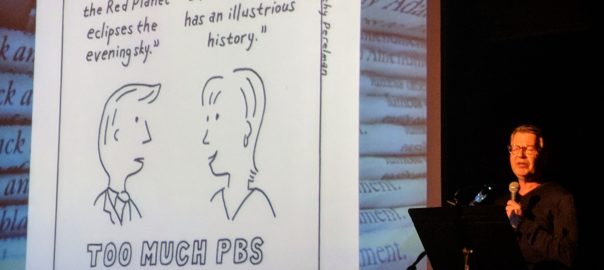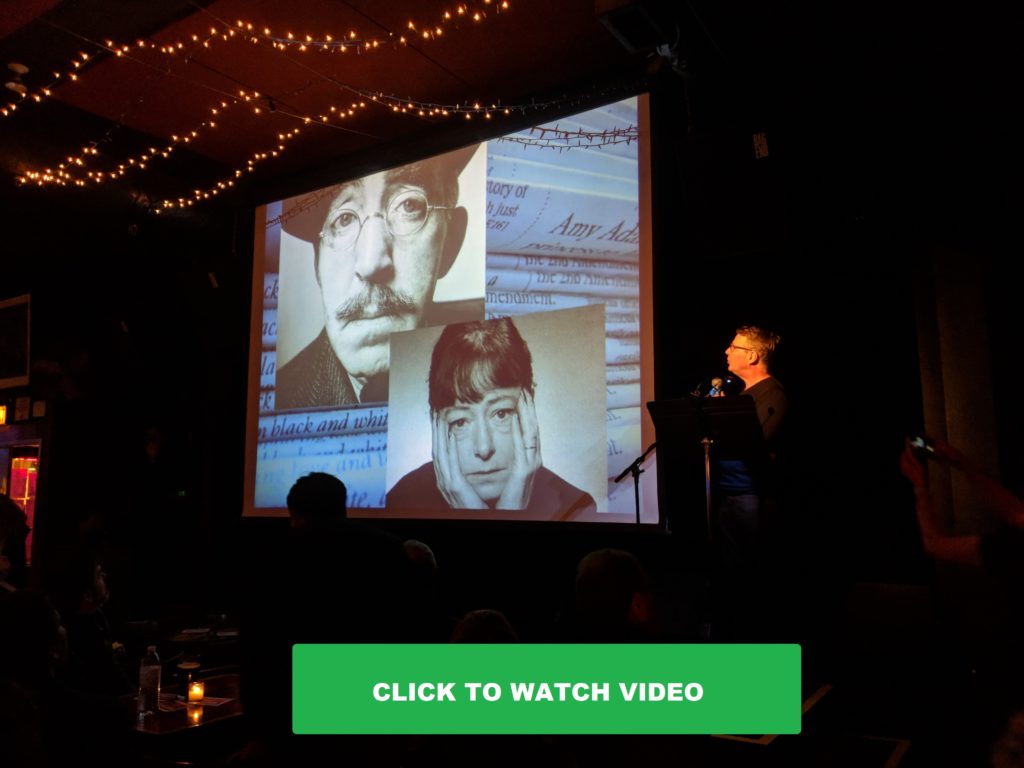I was originally attracted to Pecha Kucha because I’d read about it in WIRED, and it sounded fun. I’ve learned a lot since my first foray into it, a dozen years ago in Milwaukee. Here’s what I’ve discovered: It has become a varsity-level training technique to polish one of the four keys to succeeding in your career, today and into the future. Below I’ll list my five steps to preparing one, and I’ll share a video of an early draft of the Pecha Kucha I ultimately presented in Chicago’s last Pecha Kucha Night before the pandemic triggered shutdowns, in early March.
As you may have read from my previous post, Pecha Kucha is a highly constrained way to tell a story.
It’s been called, in the excellent business book Weekend Language, the lovechild of Powerpoint and Twitter, but may more accurately be called “public speaking meets speed-dating.” Each presenter has exactly six minutes and 40 seconds to tell their story. Pecha Kucha Nights, held in over 300 cities worldwide, typically pack ten-to-twelve speakers into the program. Folks new to the format tend to stumble out of their first event giddy with the muchness of it all.
Pecha Kucha Strength Training for Business
The reason putting together a Pecha Kucha (PK) is so useful for storytelling is the constraints it demands, and thus the need for thorough planning and rehearsal. Typically, when a novice at storytelling is asked to assemble and present some slides, they create way too many and meander through them. In the words of Weekend Language‘s authors, these newbies “bore the snot” out of their audiences.
At an Accenture Storytelling Club meeting (yes, my employer’s Chicago Digital Hub really has such a thing), the club members decided, after watching one of my PKs, that they’d take a shot at their own ersatz Pecha Kucha “night” to hone their presentation skills. So everyone who was willing to try one committed to crafting their own, and was added to the club meeting lineup.
The pressure was on.
The group asked me for suggestions on how to do their very best PK. As I listed the steps I recommended they take, reproduced below, notice how those steps also describe the process you’d follow for any professionally presented talk.
Or for that matter, any elevator pitch to your boss or client.
Five Steps to Storytelling Excellence
- Begin with the end in mind. Your audience won’t remember much from the very best presentations. So think hard about the key points you want you audience to retain, and especially: The key feelings you wish to impart. “Feelings” you say? In business? Yes. Do you want to inspire your audience? Persuade them? Prepare them for something on the horizon? You’ll only effectively deliver your key points if they are transmitted on a “signal” of human emotion.
- Consider the amount of detail that’s needed. With a PK, you only have 20 slides, and 20 seconds per slide. But what if you were given 20 minutes? Or 50 minutes, like this talk I co-presented with a client colleague in Las Vegas two years ago? You cannot over-pack the presentation or your audience will retain little of it, even if they’re taking furious notes. Less common is the situation where you have too little information to convey given the time necessary. In a case like this, you may want to consider adding an interactive quiz (I’m a personal fan of Kahoot for cell phone enabled quizzes) or some other way to use that extra time to emphasize one or more of your points — while keeping your audience smiling and nodding in agreement.
- Focus on the words over your visuals. Have you noticed how tightly scripted your favorite TED Talks are? How there isn’t a wasted word? That’s not an accident. If you enjoy listening to podcasts, I strongly recommend this Slate Money episode, where Weapons of Math Destruction author Cathy O’Neil discusses the insane amount of work she and her director went through to polish her TED Talk to perfection.
- Practice in front of volunteer audiences. Here I can imagine an objection from you, along the lines of “But my talk is too technical. My friends and family would never understand it.” I’ve got news for you. If you don’t write your presentation with enough breadcrumbs to help those not familiar with certain jargon or concepts, you’re not done yet. Without “talking down” to your audience, you should define — or ideally, eliminate — all jargon. I’ve presented to my share of CEOs, usually in one-on-one or small settings, and every one of them has made it clear that they expect a simple, crisp story. If you hear, “I didn’t understand XYZ,” find a way to make XYZ something they can grasp. Make it understandable to anyone. Which leads to the last step …
- Iterate. Every time you present to a new audience, you’ll see other cues to what you could improve. Or you’ll receive valuable notes. I certainly did, in the presentation draft shown below. In fact, a far earlier version of this was presented in front of two dear friends, and afterwards they had this tip: “You talk about you and your wife at the time of this story, but we never see you two. Include a photo, early on, to help us better identify with you both.” That was outstanding advice I could have never gotten if I rushed my presentation to the stage!
Embedded below is the version just before it was ready for PK Night. I presented the content you see in embedded video below (live — this recording was made as a rehearsal mechanism). It was presented to an audience of one. She really understands clear communication. She’s co-founder of a Chicago puppetry production company. Her note: Early on, give the audience permission not to understand some of the one-panel cartoons that are shown. Great advice when the audience is both listening and reading, in 20-second bursts! You can see the final version, presented at Martyr’s in early March of this year, here.
But here’s the near-final draft:
The key lesson for business-minded speakers? If you want a story to be easy to understand, put in the work. And consider a Pecha Kucha!


